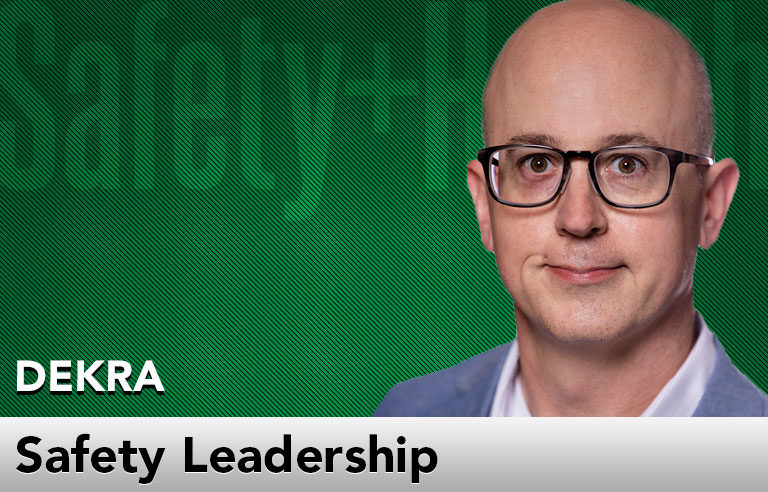Safety Leadership: Last year’s top safety trends are here to stay

Editor’s Note: Achieving and sustaining an injury-free workplace demands strong leadership. In this monthly column, experts from global consulting firm DEKRA share their point of view on what leaders need to know to guide their organizations to safety excellence.
For many of us, 2023 represented some return to normalcy – or at least a “new normal.” Although business challenges remain top of mind, several safety trends and insights revealed themselves last year. A few that got our attention:
- Artificial intelligence
- Holistic assessment
- Metrics, metrics, metrics … made meaningful
Integration of AI
Unsurprisingly, AI made the list for 2023. Nearly every media outlet is extolling AI’s virtues (or cautionary tales) and how it will impact everyone’s lives. AI is here to stay, and those in safety leadership positions should consider using it within their safety management system. For example:
Data analytics to gain meaningful insights – Numerous organizations use natural language processing to understand further what their data tells them. For example, it can analyze leading or lagging metrics for trend analysis of exposures, incidents, etc., or be fed a set of industrial hygiene exposure data to analyze for statistical significance related to an occupational exposure limit.
Succinct messaging to weed through the noise – NLP technology is also used to review and interpret large amounts of safety-related information and keep what’s important front and center. For example, it can summarize a portion of a policy that’s often not complied with, per the data, and communicate the highlights.
Technology in safety is rapidly evolving – think systems that can recognize personnel without proper personal protective equipment or learn management processes that evaluate an employee’s work area for exposures, and then tailor specific training based on the employee’s history, exposure data and work tasks.
Holistic assessment
When safety is suffering, leaders often have a good idea of what’s wrong – or at least they think they do. Leaders will attempt to narrow the focus to the “root cause,” often putting up blinders to other factors that can undermine the safety culture and performance.
This is where holistic assessment comes in. This process assesses your SMS as a whole, plus the extraneous factors contributing to safety performance, such as leadership, culture, performance management and governance. Each of these elements can directly affect how well the SMS functions and should be considered to get a truly holistic view and ensure we’re emphasizing the right areas and meeting the organization where it is.
Metrics made meaningful
The absence of injury doesn’t equal the presence of safety. Read that again, because fully understanding this can often be an “aha” moment. We can’t congratulate ourselves for “everyone going home safe today” if, in fact, we left our people unprotected from countless exposures and they took 25 shortcuts to meet production demands. That isn’t true safety – it’s a game we play to try to convince ourselves and others that we’re better than we truly are.
Recently, the leadership of an organization I’m working with decided to drop all internal reporting of their recordable rate. They’ve realized that their emphasis on the recordable rate wasn’t adding up to protecting employees (they’ve had multiple fatalities in the recent past) and was likely leading to the opposite outcome. Moving toward leading indicators that truly increase the presence of safety via controlling exposures is a much more sustainable approach to true safety.
Looking forward
I expect to continue to see these themes dominate safety headlines in 2024 and suspect we’ll continue to see technology further embed itself into how we manage safety. This is your cue to get ready, get set and go!
This article represents the views of the author and should not be considered a National Safety Council endorsement.
 George Bower, CIH, CSP, is an executive consultant in DEKRA’s consulting practice. He has more than 20 years of progressive high-level experience in occupational safety and health, working in the automotive, primary metals, plastics, heavy equipment, chemical, health care, aviation, telecommunications, and pulp and paper industries.
George Bower, CIH, CSP, is an executive consultant in DEKRA’s consulting practice. He has more than 20 years of progressive high-level experience in occupational safety and health, working in the automotive, primary metals, plastics, heavy equipment, chemical, health care, aviation, telecommunications, and pulp and paper industries.
Direct to your inbox: Sign up to be notified in email about new "Safety Leadership" columns.
Post a comment to this article
Safety+Health welcomes comments that promote respectful dialogue. Please stay on topic. Comments that contain personal attacks, profanity or abusive language – or those aggressively promoting products or services – will be removed. We reserve the right to determine which comments violate our comment policy. (Anonymous comments are welcome; merely skip the “name” field in the comment box. An email address is required but will not be included with your comment.)

